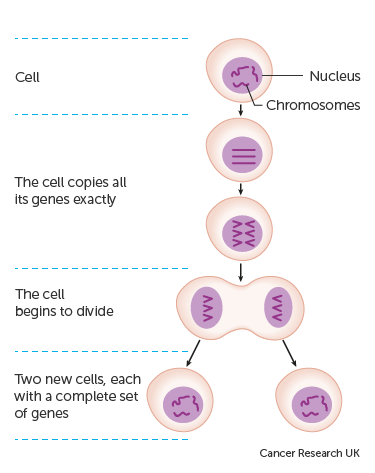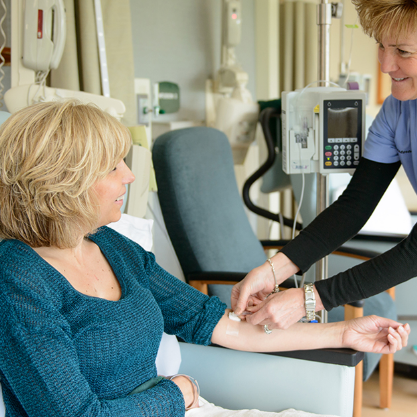What you need to know about Chemotherapy
Contents
Chemotherapy is a type of treatment where medicine with powerful chemicals is used to destroy fast-growing cells in the body. It is usually used to treat cancer because cancer cells can grow and multiply faster than most other cells within the body.
Chemotherapy may be used in a variety of settings for people with cancer, including:
-
As the primary treatment for cancer (alone without other types of treatments).
-
In combination with other therapies, such as radiation, surgery, or hormone therapy.
-
After other types of cancer treatments, such as surgery, to kill hidden cancer cells that may remain in the body. This is called adjuvant therapy.
-
To prepare your body for other treatments, such as surgery and radiation, by shrinking a tumor. This is called neoadjuvant therapy.
-
To help relieve symptoms of cancer by destroying some of the cancer cells. This is called palliative chemotherapy.
Besides treating cancer, some chemotherapy drugs can be used to treat other conditions, such as immune system disorders and bone marrow diseases.

What does the Procedure Involve?
Chemotherapy drugs can be given in several different ways. These include:
-
Chemotherapy infusions – chemotherapy is most commonly given intravenously, which means as an infusion into a vein.
-
Chemotherapy shots – the drugs can be delivered through an injection with a needle to your arm, thigh, or hip, or sometimes in the fatty part of your stomach, leg, or arm.
-
Chemotherapy pills – some types of chemotherapy drugs can be taken orally in a form of pill or capsule that you swallow.
-
Chemotherapy creams – creams or gels that contain chemotherapy drugs can be applied to your skin. This is usually used to treat certain types of skin cancer.
-
Chemotherapy used to treat an area of the body – the drugs can be delivered directly to a specific area of the body. For example, the drugs may be given in your central nervous system (intrathecal chemotherapy), in your abdomen (intraperitoneal chemotherapy), or in your chest cavity (intrapleural chemotherapy).
Chemotherapy delivered directly to the cancer – in some cases, chemotherapy drugs may be given directly to cancer or the location where cancer once was (after surgery).
How Long Should I Stay in the Area?
Chemotherapy is usually given at regular intervals (cycles), meaning a period of treatment and then a period of rest. For instance, a 4-week cycle may include 1 week of treatment and then 3 weeks of rest to allow your normal cells to recover from the drug side effects. In some cases, the doses may be given in a certain number of days in a row or every other day for several days. Some drugs may also be delivered continuously over a set number of days. Your chemotherapy cycle will be customized depending on your individual case. Therefore, your length of stay in the area will depend on the schedule/cycle of your chemotherapy. Your doctor and medical travel team will be able to advise you on this matter.
What’s the Recovery Time?
Some patients are able to get back to work within 1-2 days. It is best that you ask your employer if you can work fewer hours, work from home, or adjust your schedule when you have cancer treatment.
What About Aftercare?
Here are some things you need to keep in mind:
-
Eat food with enough protein and calories to keep your weight up.
-
Wear a hat and use sunscreen SPF 30 or higher when you are out in the sun.
-
Each time you use the toilet, close the lid when flushing and flush twice.
-
Do not have any sexual activity for 48 hours following chemotherapy.
After chemotherapy, you will need to attend regular checkups since your doctor will need to monitor the effectiveness of your treatment.
What’s the Success Rate?
The success rate of chemotherapy depends on numerous factors, including the location, type, and stage of your cancer. Your age, overall health, and any existing medical conditions also determine the effectiveness of the procedure.
It is important to know that chemotherapy has numerous side effects, including dry mouth, diarrhea, mouth sores, fever, hair loss, fatigue, loss of appetite, weight loss, and more. There is also a risk of longer-lasting effects, which may include damage to the kidney, heart, lungs, reproductive organs, and nerves.
Are there Alternatives to a Chemotherapy Procedure?
If chemotherapy has not worked, or if you do not wish to undergo this procedure, your doctor may recommend radiation therapy, immunotherapy, hormone therapy, and targeted therapy. All of these treatments can serve as either primary or complementary treatments.
For an in-depth analysis of a Chemotherapy Procedure, watch this short video.
To check prices or to book a Chemotherapy Procedure, in Thailand or anywhere else in the world, head on over to MyMediTravel now!

